If, like me, you’ve spent a lot of time looking for a quick solution to blocking noise pollution from windows, you might have come across soundproofing window films. I’ve lived in plenty of inner-city apartments, and I’m all too familiar with how irritating traffic noise can be.
But equally, I understand wanting a quick solution that doesn’t cost hundreds of dollars to install. This leads us to the topic of this article: soundproof window films.
Below, I’ll discuss what we mean by window film, what it’s made of, and why it’s not a great solution for soundproofing.
What is Window Film?
Put simply, window film is a thin layer of transparent material that can be fitted over an existing window. Generally, it’s made from polyethylene terephthalate (PET). This is a thermoplastic resin, meaning it can be heated repeatedly to change its shape and size.
PET is used because it’s thin, lightweight, and transparent. Most window film products are at most 2mm thick to avoid them impacting the window’s visibility.
PET-based window films have a number of uses, including:
- Thermal insulation
- UV reduction
- Decoration
- Privacy
- Glare reduction
Window soundproofing films typically work by creating an air gap between the existing window and the room. This helps to create an extra layer of thermal protection in the same way that double glazing works with its air gap. Other uses, such as UV protection and privacy, work by simply using colored or tinted film.
Notice how I haven’t mentioned acoustic insulation? Well, that’s because window film doesn’t do a great job of reducing sound transmission through a window. I’ll discuss why in more detail below.
First, let’s briefly cover the steps for installing window soundproofing film. While it depends on the product, many window films are simply peel and stick. But others (like this window kit) are fitted onto the window and then shrunk using heat.
Finally, you have window films like this one from Duck that sit over the frame rather than directly on the window. As with the kit above, you then shrink it to size using a hairdryer.
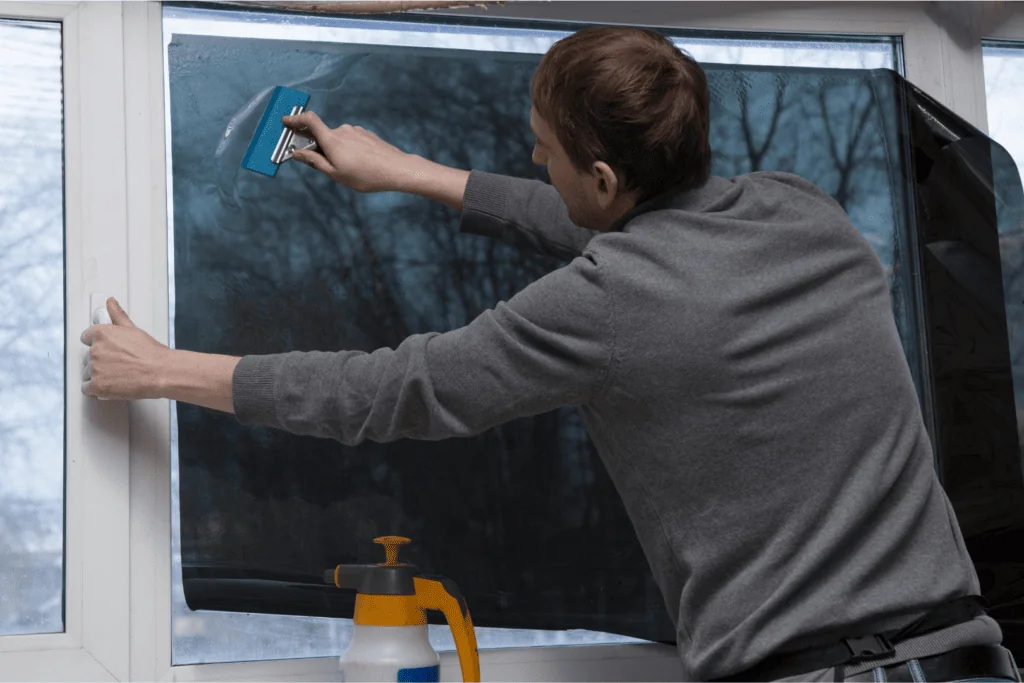
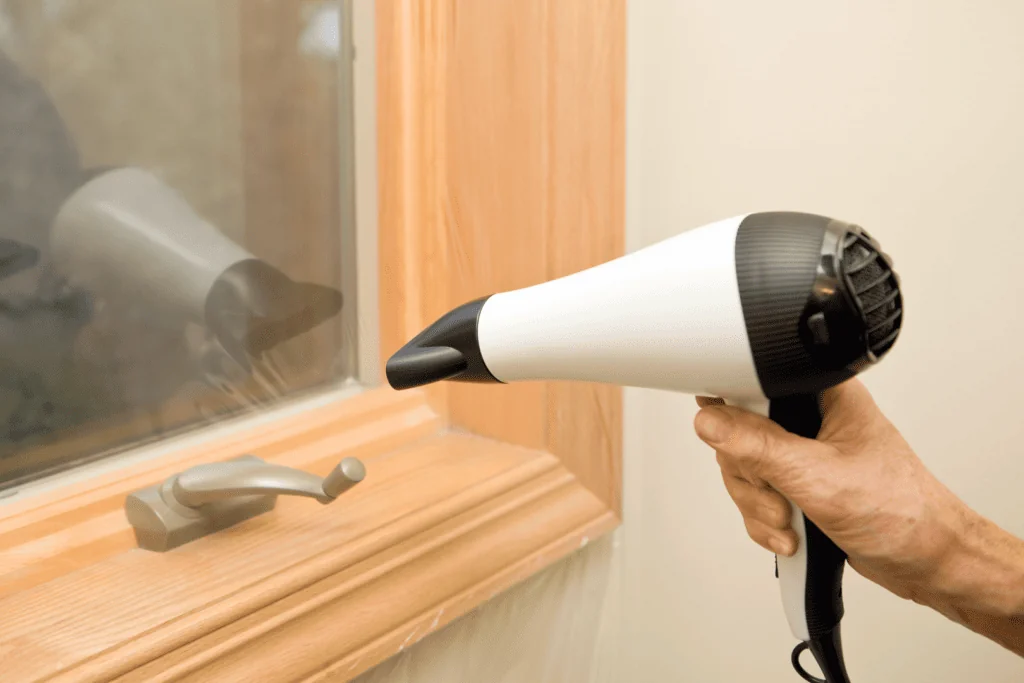
Why a Window Film Doesn’t Soundproof
So, now we know what window film is made from and roughly how it works, we can answer the question, is there such a thing as noise blocking window film?
The short answer is no because the material is too thin and doesn’t have enough mass to make a difference to the window’s Sound Transmission Loss (STL).
Put simply, STL is the measurement of how much sound is lost when the sound waves pass through a barrier. Sound waves are vibrational energy, and they lose some of this energy when passing through a medium (such as brick, glass, Mass Loaded Vinyl, etc.).
In construction, the goal is to make barriers that intentionally cause the sound waves to expend more energy, thereby increasing the STL value.
For example, increasing the mass of a wall will make it harder for sound waves to pass through, as the materials can’t vibrate as easily.
To measure this, we use something called Berger’s law. It states that doubling the mass of a structure reduces STL by 6dB. Plastic window film doesn’t have a lot of mass because, well, it’s a thin plastic sheet. Even if it added 5% of the window’s total mass, this would increase STL by 0.5dB. This is imperceptible to the human ear.
In short, window film doesn’t block noise.
Window Film and Dampening
You may have come across some resources online that state window film is the same stuff that’s used in laminated glass. I can understand why there might be some confusion around this, as laminated glass contains a layer of PVB, a plastic vinyl resin.
However, there are a couple of important differences we should mention:
- The PVB layer in laminated glass provides sound dampening. It does so because it’s sandwiched between 2 layers of rigid glass. This is how Green Glue works when used between layers of drywall.
- Although PET can be thicker than the PVB layer in laminated glass, PVB is a more resilient material, meaning it can provide better sound dampening.
A more important point is that having a layer of sound dampening material that’s free on one side is useless. This is because dampening works by reducing the size and duration of sound waves. It needs to be sandwiched between layers of material with mass to activate this effect.
This illustration should show you what I mean in a bit more detail.
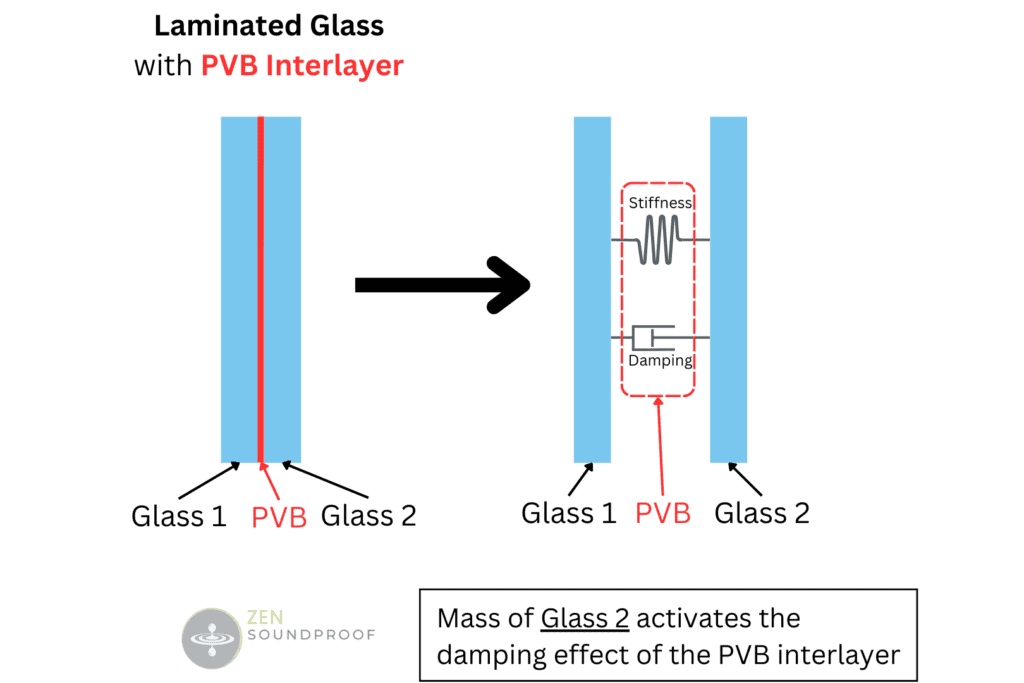

In short, there’s no such thing as sound dampening film.
Alternative Solutions to Window Film for Noise Blocking
In my experience, window film is only really useful for its speed, price and convenience. There are better solutions for pretty much anything else it claims to be good at. While I won’t cover anything to do with thermal insulation, we’ll look at alternatives for noise blocking. Luckily, some of these also help with thermal insulation.
Here are my main alternatives to noise blocking window film. Some are a bit more expensive, but they all fall into the same low-cost bracket (compared to fitting new windows, at least).
Seal Gaps Around the Windows
A good place to start is by sealing gaps around the window panes and window frame. These can let in noise and heat and can happen due to poor installation or building movement.
You could fill the gaps with a latex-based caulk sealant, as this’ll let you work on small gaps. If they’re fairly large, or the window doesn’t fit properly in its frame, weatherstripping is a better option.

It’s a self-adhesive tape made from foam or rubber that compresses when you close the window. This helps to seal the gap more effectively, creating a decent sound and thermal barrier.
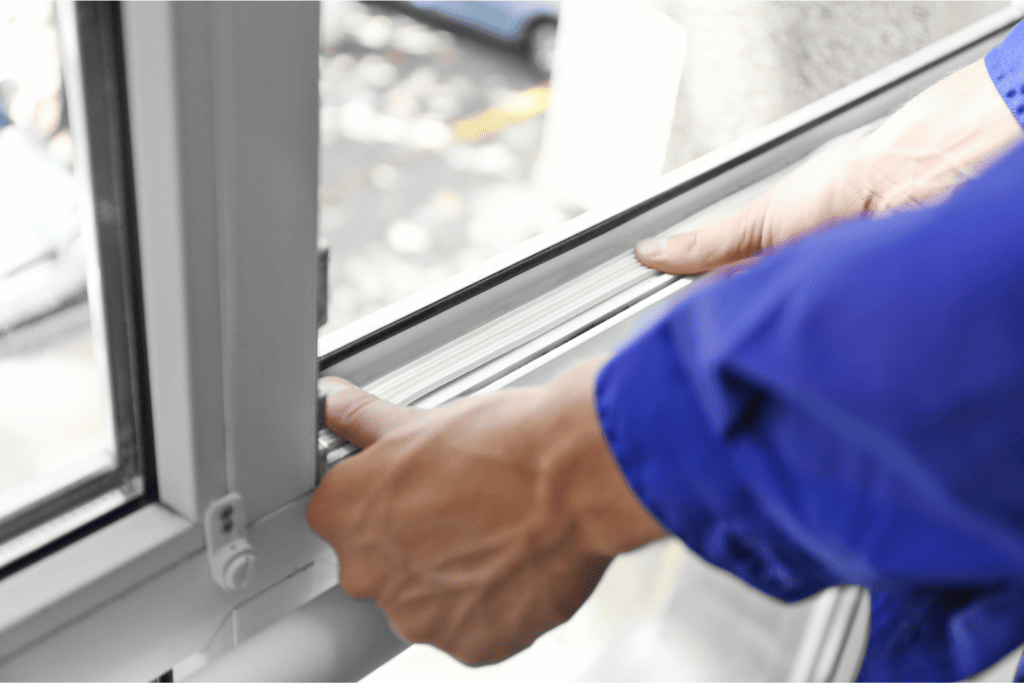
Soundproof Curtains
I’ll start by clarifying this solution: soundproof curtains don’t block sound. Rather, they absorb sound waves and muffle them. This depends on the curtains’ thickness and materials, but they generally reduce noise pollution more than normal curtains.
In terms of soundproofing, curtains suffer from many of the same problems as window film: they’re not really thick or mass-rich enough to block sound. That said, some soundproofing curtains are heavy enough to decrease noise by around 2-4dB, which is not huge but noticeable..
I’ve written a full article on the best soundproof curtains. I recommend checking it out to get some options and to understand in more detail how they work. You’ll need a set of curtains large enough to cover the entire window frame.
Window Inserts
Also called interior storm windows, window inserts do what noise blocking window film claims to. Rather than being a thin sheet of plastic film, window inserts are usually made from acrylic or Perspex. The extra thickness and rigidity help block noise more effectively. Plus, they can help a lot with thermal insulation.
Check out my article on the best soundproof window inserts to see what readymade options are available. Alternatively, I’ve written a guide for DIY interior storm windows if you fancy making them yourself.
In my opinion, window inserts such as the ones linked here provide the best compromise between acoustic and thermal insulation and window functionality. They’re transparent but also form a thick enough barrier to add noticeable mass to your existing windows. As such, they’re better than the best soundproof window film could ever claim to be.
Window Plug
Whereas window inserts are transparent and usually made from plastic, window plugs are usually opaque. We make them with materials like mass loaded vinyl and acoustic foam to effectively block noise.
Because of this, the extra performance comes at the expense of visibility. But if you only use them when you sleep, it really won’t be an issue. You can learn more about the topic in my article on window plugs.
Replace Your Windows
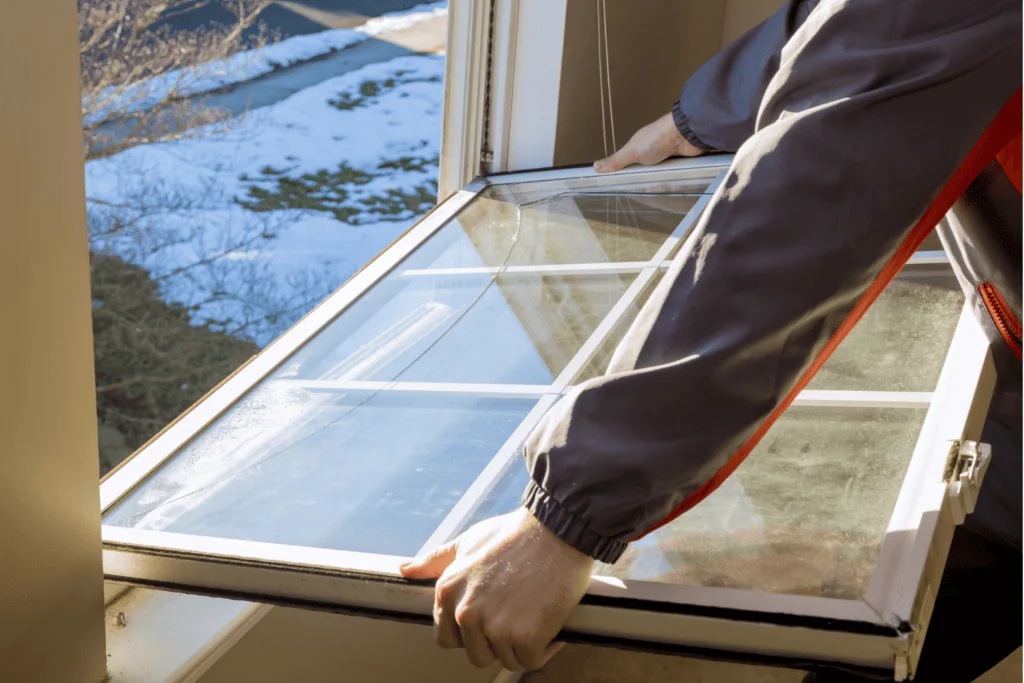
Replacing your existing windows is the most expensive option. However, if you’ve only got single pane windows, the added noise reduction and thermal insulation will be more than worth it in the long term.
I have a guide dedicated in helping you choose and invest in the right soundproof windows.
Bear in mind, this project could set you back several thousand dollars depending on the windows you want to install. But after the initial installation, you don’t have to worry about it again.
Depending on your existing windows, you could look at double- or triple-pane windows. Check out my article on the best window glass to reduce noise to understand your options in more detail.
Why Install Window Soundproofing Film?
If window film doesn’t block noise, what reasons might we have for installing it? In my opinion, its biggest selling point is its price and, by extension, its convenience. For example, the quickest option on my list above is the soundproof curtains, and they’re potentially more of a pain to install than window film.
The main benefits of using window film over the options listed above include:
Privacy
One big advantage of window film is that it can improve privacy while having minimal impact on how much light enters the room. For example, patterned films won’t let people see in, but should still let plenty of light through.
There are also one-way tinted options that are quite inconspicuous.
Energy Saving
According to PR Solar, window film can increase insulation by up to 30%, having a noticeable impact on your heating and cooling bills. How the window film does this depends on the technology, but many include reflective elements to reduce heat transfer into the room.
Similarly, the extra air gap between the window and film can help reduce heat loss during colder months.
UV-Resistance and Anti-Glare
UV-resistance is a big selling point of window film. 3M, for example, claims to reduce UV rays by up to 99% and infrared rays by 97%. These are some pretty large-scale numbers considering these window films have minimal impact on the level of natural light entering the room.
A lot of modern windows will have some kind of UV-blocking element. But if not, this kind of window film is a major advantage.
| Film Type | Visible light transmitted (%) | UV light rejected (%) |
|---|---|---|
| Neutral 20 | 15 | 99 |
| Neutral 35 | 36 | 99 |
| Neutral 50 | 52 | 98 |
| Neutral 70 | 69 | 98 |
Design
Finally, design is a big selling point of window films. You can get stained glass-style options and different frosted finishes. While design might not be your top priority, many of them look nicer than acrylic window inserts.
FAQs
Does noise blocking window film work?
Noise blocking window film doesn’t work because it’s too thin to add considerable enough mass to an existing window. Similarly, it can’t dampen sound waves because it needs to be sandwiched between 2 layers of mass. The only thing it can do is add an extra air gap, but extra mass is far more effective at sound blocking.
How much does window film reduce noise?
There isn’t a figure for how much window film reduces noise because its effect is so small. For example, if we were to use Berger’s law of mass, a 2mm sheet of PET plastic could add, at most, 5% extra mass to a glass dual-paned window. This would result in an increase in transmission loss of 0.5dB. This is an increase that’s imperceptible to the human ear.
Final Thoughts
I hope this article has helped clarify why window film isn’t a good option for sound reduction. Despite the term “noise blocking window film” being prevalent online, there’s not really any such thing.
That said, the options I’ve listed above should work well in place of window film, for both acoustic and thermal insulation.
What’s your experience with window film? Have you tried any products you think perform better? If so, drop your comments below.
